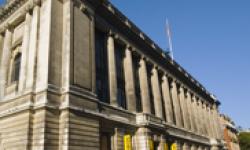The Science Museum in Kensington, England in the United Kingdom, was founded in 1857 with objects shown at the Great Exhibition held in the Crystal Palace. Today Science Museum is world renowned for its historic collections, awe-inspiring galleries and inspirational exhibitions.
Our collections at Science Museum form an enduring record of scientific, technological and medical change since the eighteenth century.
The Science Museum has around 12,000 objects on display in its galleries at South Kensington, England. The remaining 218,000 objects in the collections are located either at Blythe House in Olympia, West London or at Science Museum Swindon at Wroughton Airfield in Wiltshire.
Blythe House was built in the early twentieth century as the headquarters of the Post Office Savings Bank. The building is shared between the Science Museum, the British Museum and the Victoria and Albert Museum as a storage facility for small and medium sized objects.
The Science Museum in Kensington, England, occupies over 90 rooms, which are filled with 203,000 artefacts relating to the history of medicine, science and technology. Within the rooms, the majority of objects are either floor standing, or laid out on shelves or in cupboards with glass doors, so that they can be made available to visitors, researchers and staff. Daylight is blocked out by covering windows, which also reduces dust levels, and the environment is monitored, with a pest management strategy in place to reduce the agents of deterioration. Some rooms contain air filtration systems to remove acidic fumes, for example from the early plastics collection.
The basement and the majority of rooms on the ground floor are occupied by objects from the collections of the Wellcome Trust, which are artefacts of the history of medicine. The ground floor also houses part of the pictorial collections and then the remaining four floors hold the rest of the objects, arranged by collection type.



Science Museum reviews
Login to comment